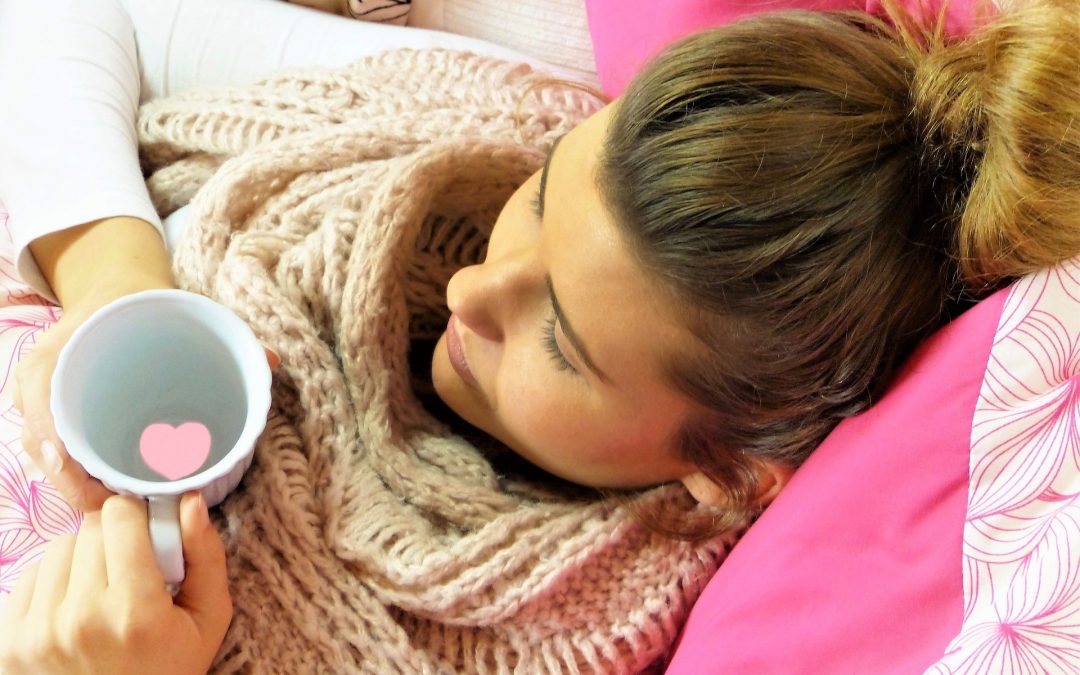In April 2012, the Journal of the American Medical Association published a review and meta-analysis to assess the association of botulinum toxin A with reducing headache frequency when used for preventive treatment of migraine, tension, or chronic daily headaches in adults. This review and meta-analysis examined 31 clinical trials of Botox for migraine relief.
 When the researchers looked at the placebo-controlled trials, they found that Botox was associated with only two fewer headaches a month for people with chronic migraines and those with chronic daily headache (chronic meaning in this case, more than 15 headache days a month). For people who don’t fall into this category, the report states that “Botox is no help for people with episodic migraines (fewer than 15 a month) or chronic tension-type headaches.”
When the researchers looked at the placebo-controlled trials, they found that Botox was associated with only two fewer headaches a month for people with chronic migraines and those with chronic daily headache (chronic meaning in this case, more than 15 headache days a month). For people who don’t fall into this category, the report states that “Botox is no help for people with episodic migraines (fewer than 15 a month) or chronic tension-type headaches.”
Botox is currently considered a preventative medication for migraines. The review and meta-analysis from 2012 found that Botox provided “a small to modest benefit for patients with chronic migraine headaches and chronic daily headaches.”
The review’s lead author, Dr. Jeffrey Jackson, said, “If I was having more than 15 migraines a month, I’d give Botox a try. It has few side effects. And, if it helps, you can go 90 days without as many headaches and without daily side effects.”
The good news about Botox side effects is that they aren’t very common and only occur in about 10% of the people who are treated. The most common side effect is neck pain but the other side effects include:
- headache
- migraine
- slight or partial facial paralysis
- eyelid drooping, bronchitis
- musculoskeletal stiffness
- muscle weakness
- pain in one or more muscles, ligaments, tendons, or bones
- muscle spasms
- injection-site pain
- high blood pressure
What does it cost?
 Some insurers won’t pay for this procedure so this may be something that you’ll have to pay for out-of-pocket and it doesn’t come cheap so check with your insurer first. According to migraine.com, the cost of a 100 unit vial of Botox is approximately $525. A typical dose of Botox for migraine treatment is 155 units, but that can vary. Depending on what your doctor charges in addition to the Botox itself, you can end up spending $1500-$2500 total before you even know if it is working for you or not.
Some insurers won’t pay for this procedure so this may be something that you’ll have to pay for out-of-pocket and it doesn’t come cheap so check with your insurer first. According to migraine.com, the cost of a 100 unit vial of Botox is approximately $525. A typical dose of Botox for migraine treatment is 155 units, but that can vary. Depending on what your doctor charges in addition to the Botox itself, you can end up spending $1500-$2500 total before you even know if it is working for you or not.
What is it like?
You’ll see a lot of different stories from people who have undergone this treatment here and in this Facebook group and their experiences vary substantially.
Here’s what one person said who thought it was worth it had to say:
“I was finally migraine free for the first time in 53 years of suffering. I did have one bad side effect from it early on. My neck became so weak from the botox that I could barely hold my head up. It was a severe side effect and very scary. Finally after 2 months of this the botox wore off and I was able to hold my head up properly. Now every 3 months I get botox treatments in the head neck and upper back I am finally enjoying life with very few headaches. The injections are stressful to go through but is definitely worth it.” [Read the full review here]
And here’s what one person who definitely didn’t think it was worth it had to say:
“Within 24 hours I had the worst headache of my life. I thought I was literally going to die. The headache decreased a small amount daily but in crept anxiety, depression, nightmares and a strange feeling of disassociation. I lost my job and my marriage suffered as well. Oh, and my migraines are meaner than ever” [Read the full review here]
 Many of the stories I’ve read state that the person was not told of all of the potential side effects and the long term side effects so take the time to do your research before jumping into this. Anecdotally, it seems that certain triggers fair better with this treatment than others, so be sure to discuss these with your doctor first.
Many of the stories I’ve read state that the person was not told of all of the potential side effects and the long term side effects so take the time to do your research before jumping into this. Anecdotally, it seems that certain triggers fair better with this treatment than others, so be sure to discuss these with your doctor first.
How does Botox work for migraines?
The simple answer is that we don’t know fully at this point and it was only really discovered as a migraine treatment when people who were using Botox for wrinkles experienced changes in their headaches.
A study by Rami Burstein et al. using animal models suggested that “botulinum toxin inhibits pain in chronic migraine by reducing the expression of certain pain pathways involving nerve cells in the trigeminovascular system. The trigeminovascular system is a sensory pathway thought to play a key role in the headache phase of a migraine attack.”
What should you do?
Only you can decide if this is right for you but I would recommend first listening to the cry for help that your body is sending. Migraines aren’t just a nuisance to drive away, they are a signal that something is off and needs your attention. That may be a buildup of heavy metals in the body, a parasite, a hormone imbalance, or a nutritional gap, but it certainly isn’t a botox deficiency.
Tried everything and still getting migraines?
A trained Migraine Freedom™ Coach can help!




I have always heard this about migrants and botox. I used to work for a plastic surgeon when botox first came out and early research suggested this. While I do not suffer so many migranes – only a few every now and then, if they were consistent I would actually consider this for myself. Simply because if done correctly, most botox injections go unnoticed physically, and if it would cease the pain and time lost due to migrants, I’d be on board! This will certainly be helpful inquiry for many.
Erin, I had heard about botox being a great option for those suffering from migraines, however, it’s clear with your research that their may have been some hype associated with the studies. As always, thank you for bringing such a well-rounded perspectives to all things migraine-related!
I’ve gone to a plastic surgeon for years and gotten many small surgeries done there. I had never heard of this, but I wasn’t going for cosmetic reasons either. I simply never wished to learn about botox before. I heard to many horror stories about it and honestly don’t know how I feel about surgeries for looks. I’d be willing to learn if it indeed does have to do with health issues. I’ve had many life saving surgeries though and am a bit tired of surgery to be honest. I have to admit that looks, your health, etc. has alot to do with your energy, I don’t know why I never put the two together honestly. Thank you for the education. 🙂
I’ve had 3 Botox treatments. What I’ve noticed is that the severity of migraines has diminished. I rate my headaches on a 1-3 scale with three being the worst. Before treatment about half of them were 3s. Now most are 1 and 2s. I consider this a blessing. I still get more than 8 migraines a month but I’ll take the lessening of severity. I had a slight drooping off one eyebrow after my first treatment. The doctor avoided this area with subsequent treatments. I would encourage others to give it a try.
I worked as a nurse before I was injured and had to change professions and have a LOT of concerns regarding botox injections. As a very last resort I might consider this treatment, but it would be as a last resort. There has ALWAYS been hype and skewed study results concerning everything medical. You can take ANY statistic and spin it any way you want. That is how everything is SOLD to the public. Do your own research and make an informed decision that is right for you. I personally do not want Botulinum toxin voluntarily injected into me (it IS a neurotoxin).
Unfortunately I am one of the 10% people that experienced very bad side effects.
It was just terrible, very painful in deed.
I also would be very concerned.A
Long term effects of Botox are not really known.
Look at all the possible treatments first before undergoing any therapy.
Side effects are hard to repair from if you suffer from toxicity.
I started using Botox for my chronic daily migraines in May 2011. They have been a life safer for me. Prior to Botox, I had 15-18 migraines per month and now I have 6-8. Also, the severity is not as intense. The only problem I don’t like about it is that it takes 2 weeks to get into my system and then the last two weeks it goes out of my system and I only have 2 good months. I wish insurance companies would recognize this and cover it every two months so it always stays in your system. Most people only get the normal 31 shots but I asked my doctor to use the full 200 units since I’m paying for it. So, I get 37 shots every 90 days and I look forward to it every time!!! Anything to relieve some pain, because in my 29 years of suffering from migraines, I’ll take whatever I can get.
That’s really great that it has provided so much relief for you Holly! Thanks for sharing. Interesting about it only lasting 2 months for you – wonder if they are talking about that behind the scenes.
I had no idea Botox could help with migraines. I have migraines, not chronic thankfully. Some months I get one, others 2 or 3, and others 0. Those are the good months! haha
It’s so interesting to me how medical breakthroughs can come so accidentally. I have a friend who uses Botox for her migraines, and shd swears by it.
This is the first time I am learning about this so it’s really an eye opener for me. Agree how migraines serve as signs that there is something in our bodies that need attention and so we should look into it.
I’ve heard great things about how Botox can help those who suffer from chronic migraines. I can’t imagine that they’re easy to deal with, so anything that can help is wonderful!
This sounds like a great relief for migraine. Thank you so much for sharing this!
Thanks for sharing this information. This is the first time I learned that botox can help cure migraines. Maybe when you feel good after the botox, hence easing the migraine.
I really had no idea that Botox can help prevent migraines. Thank you for sharing this information and for doing the research. I don’t suffer from migraines but I know a few friends who do and will share this information with them.
Wow! That’s a new fact about Botox. I’ll look into this and research more about it.
I think this is great for those who are able to benefit from this treatment. But yet I feel bad for those that struggle with the side effects or who find the treatment to not work after spending all that money! I know a few people who suffer with migraines and wish they could find a good solid treatment, or better yet, a cure.
I have a friend who suffers from chronic migraines. I’ve only dealt with a few. I will send her this article to see if she’s interested in trying Botox